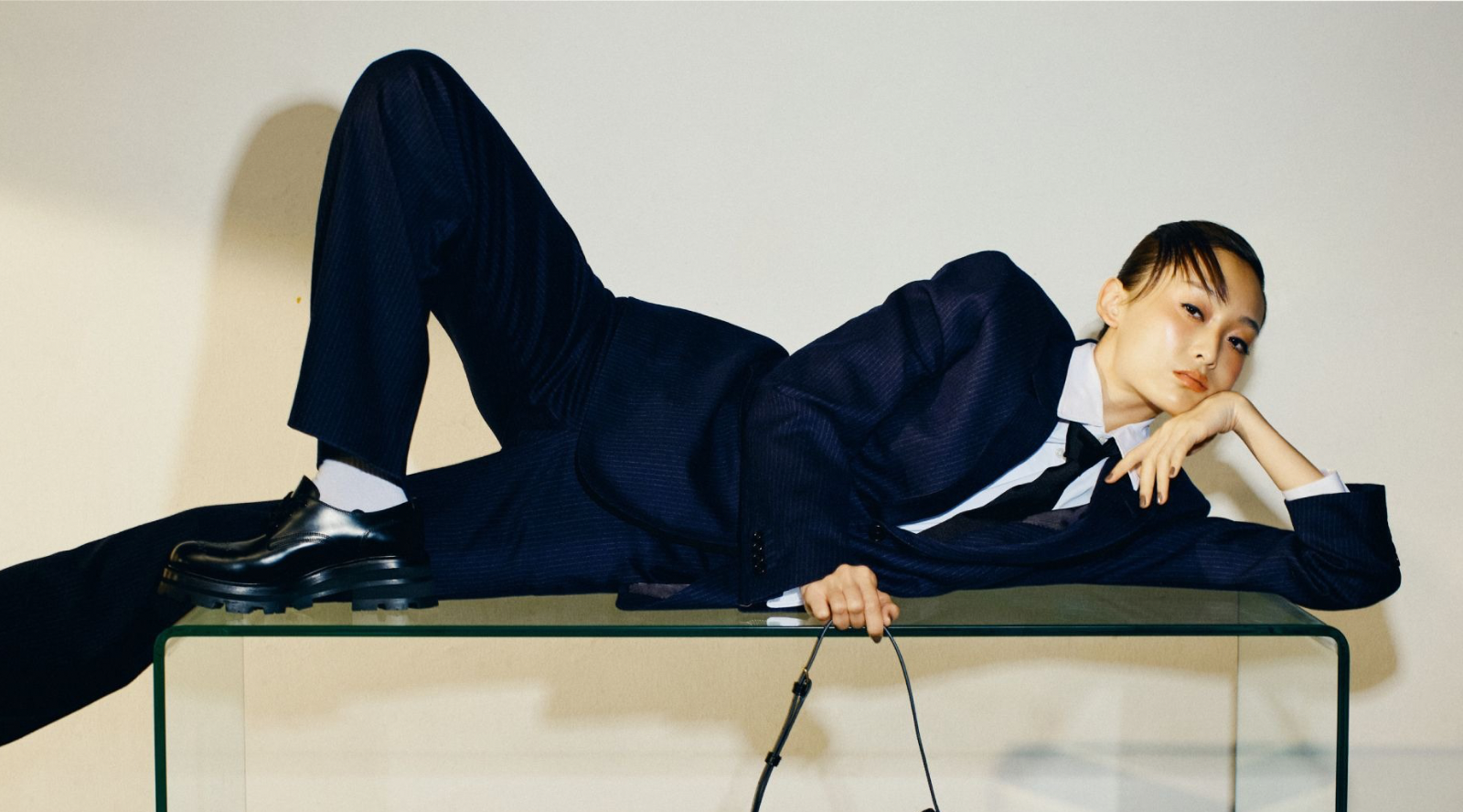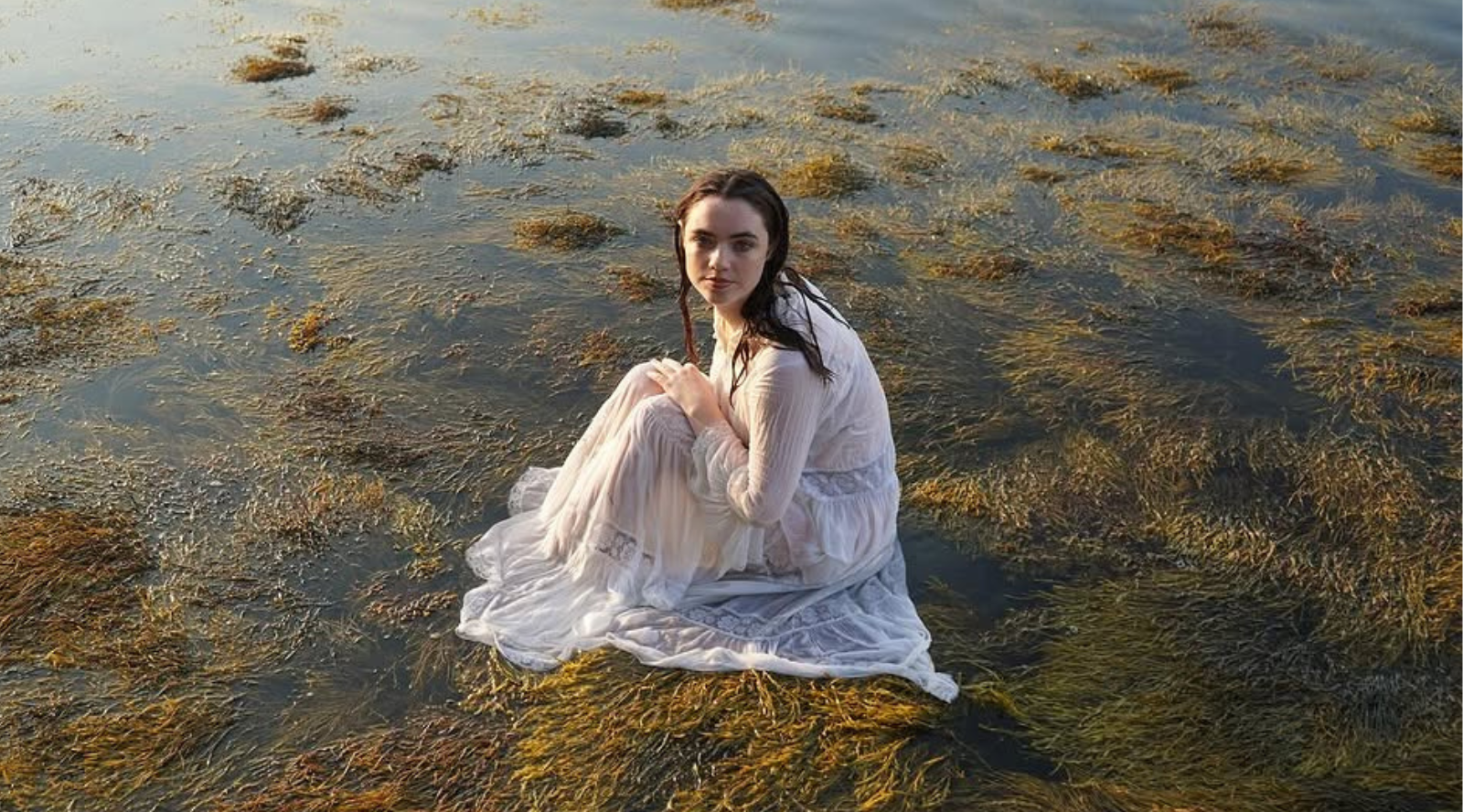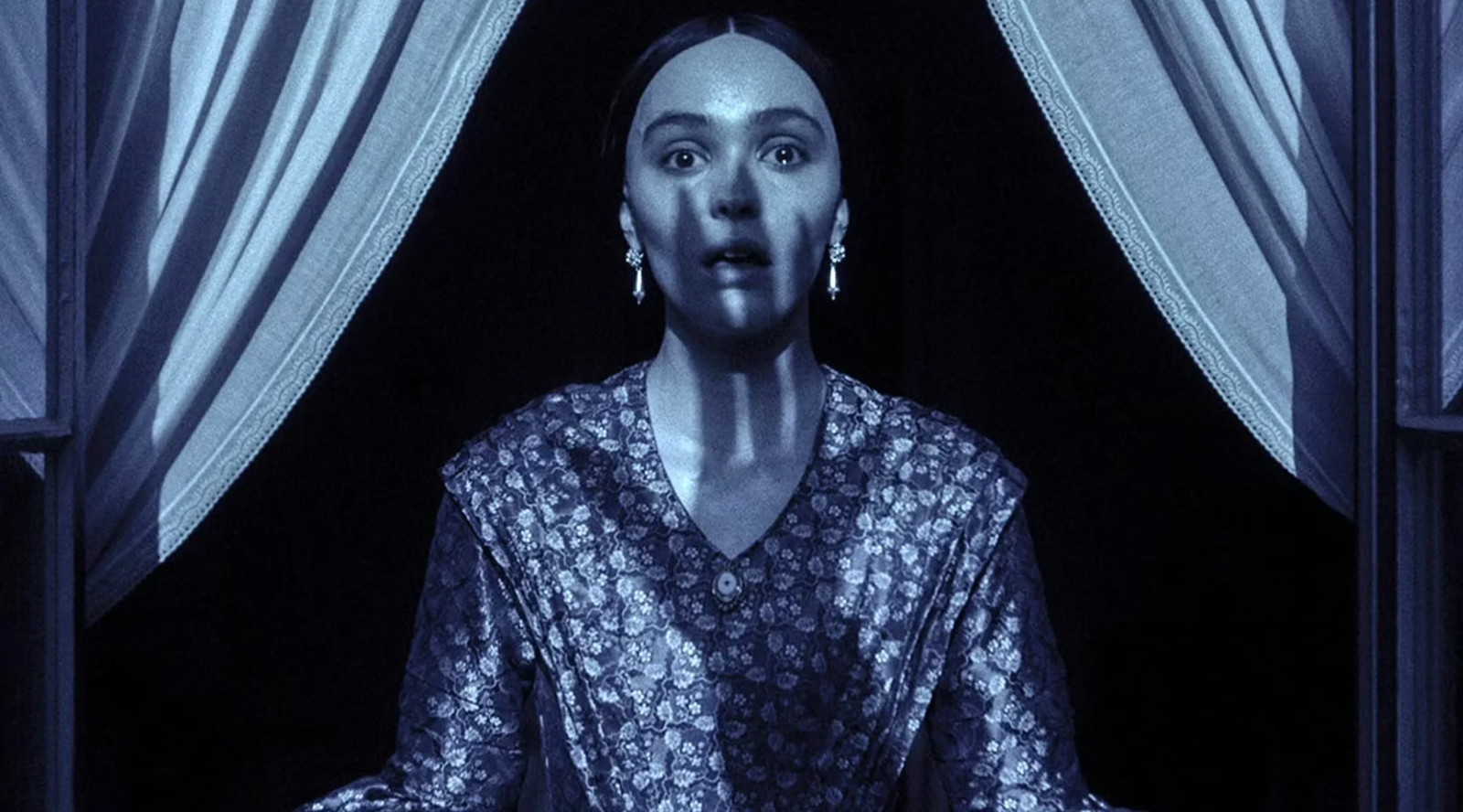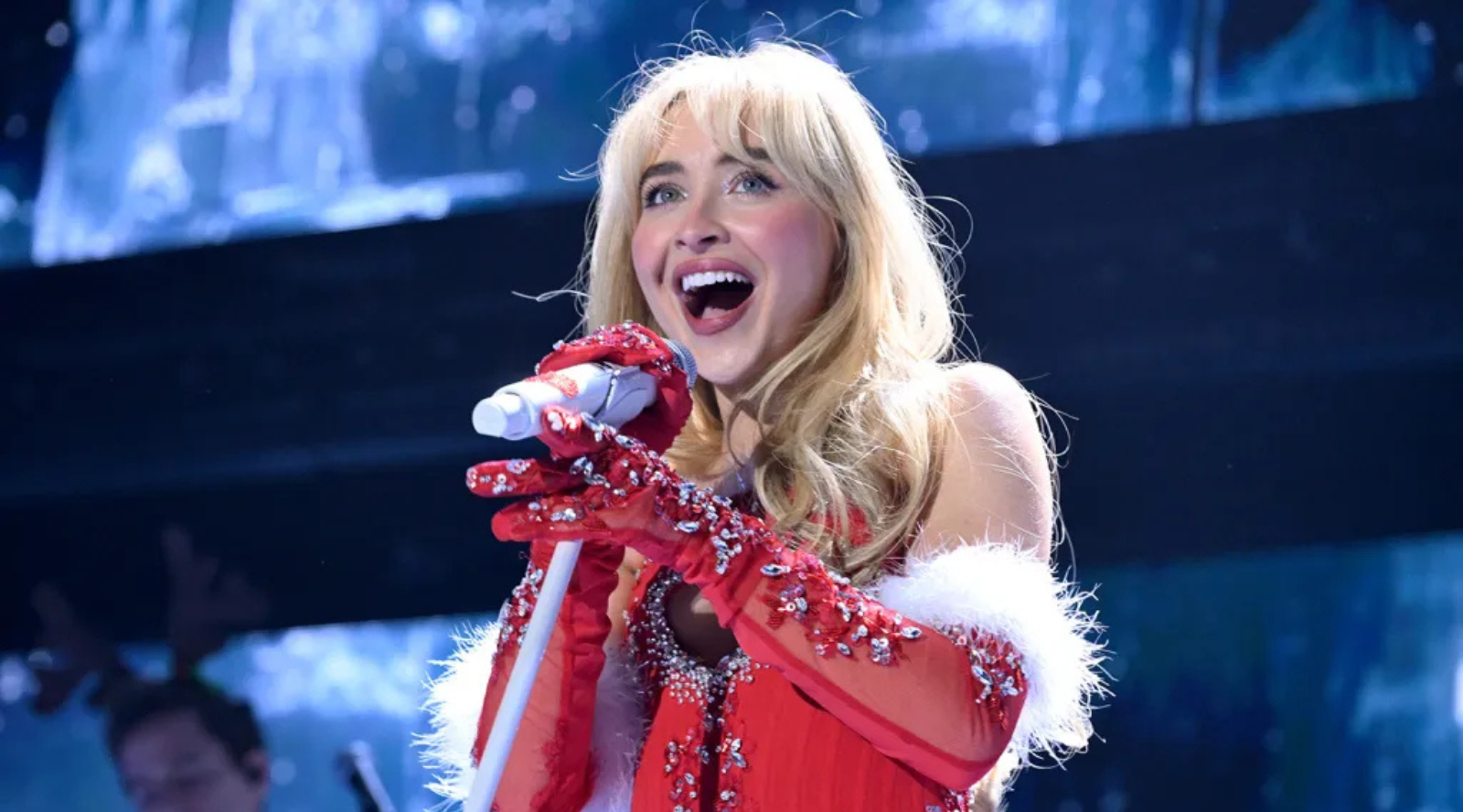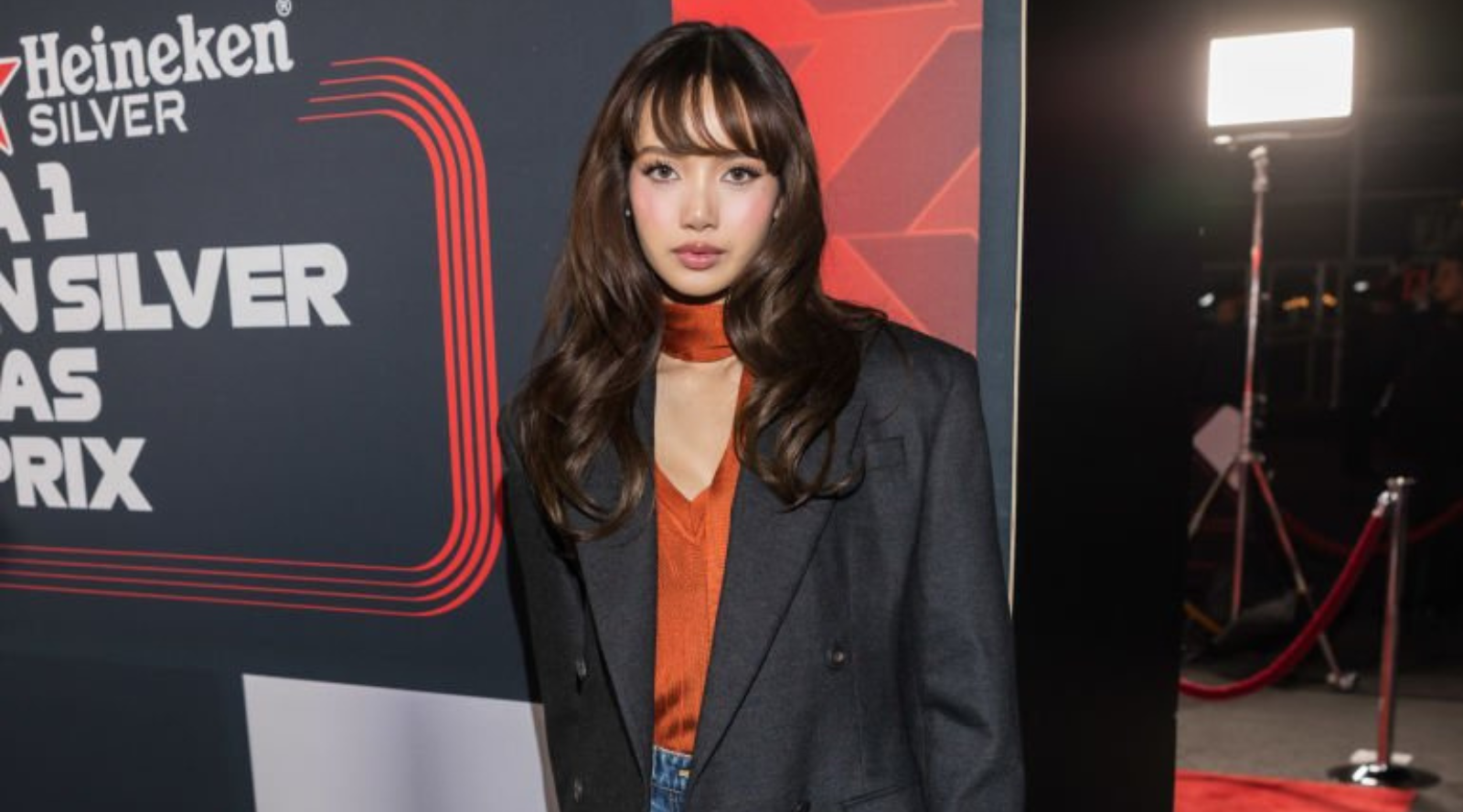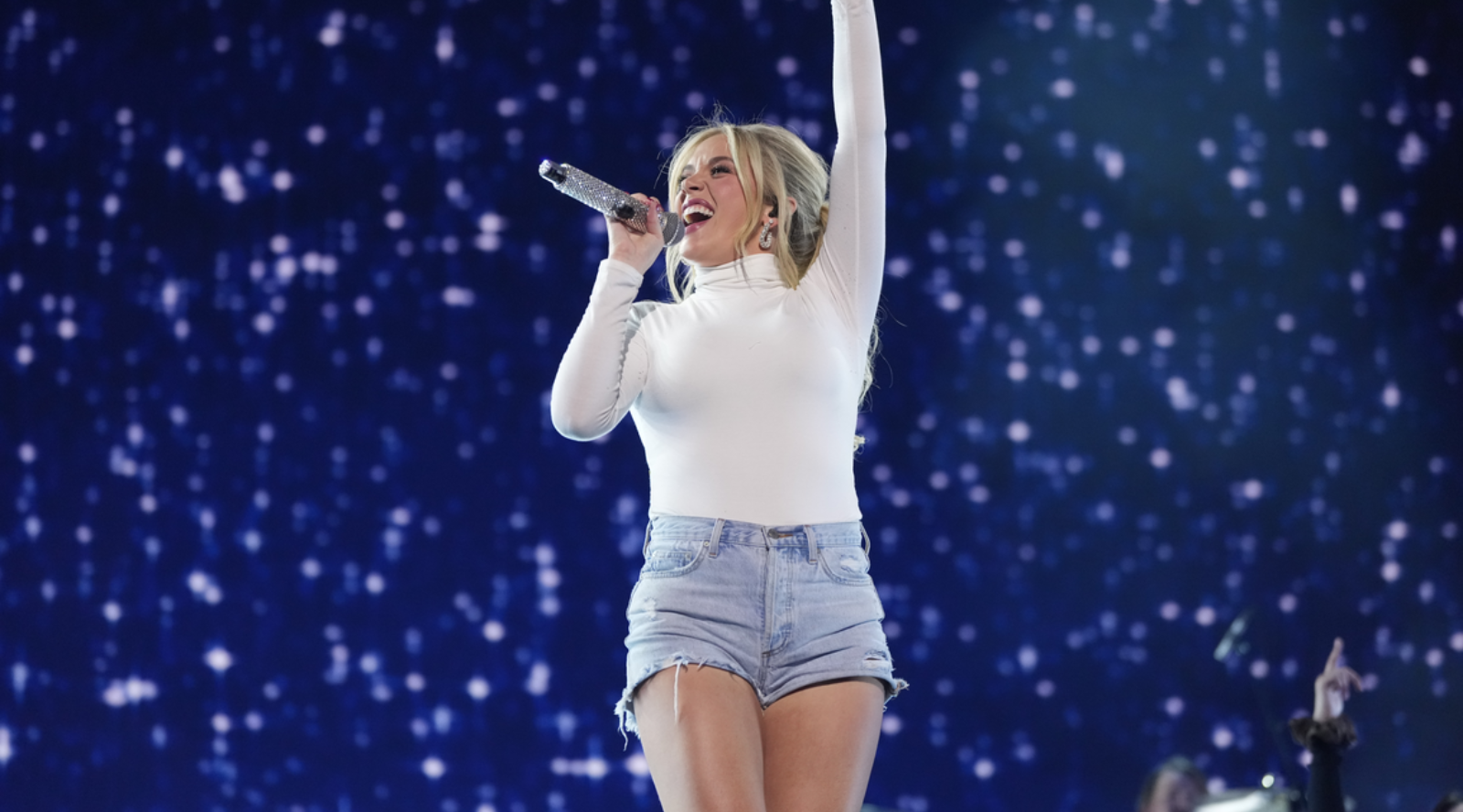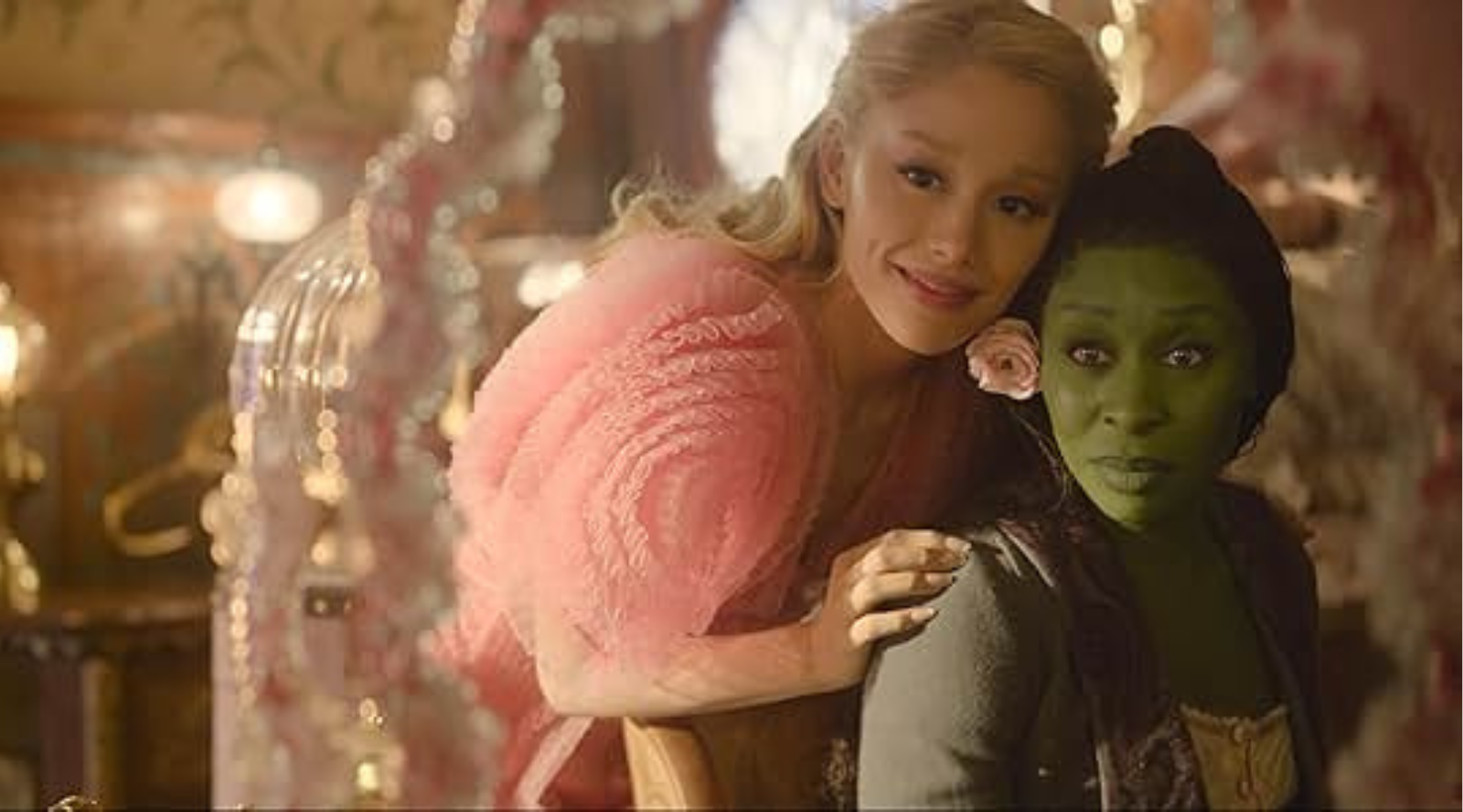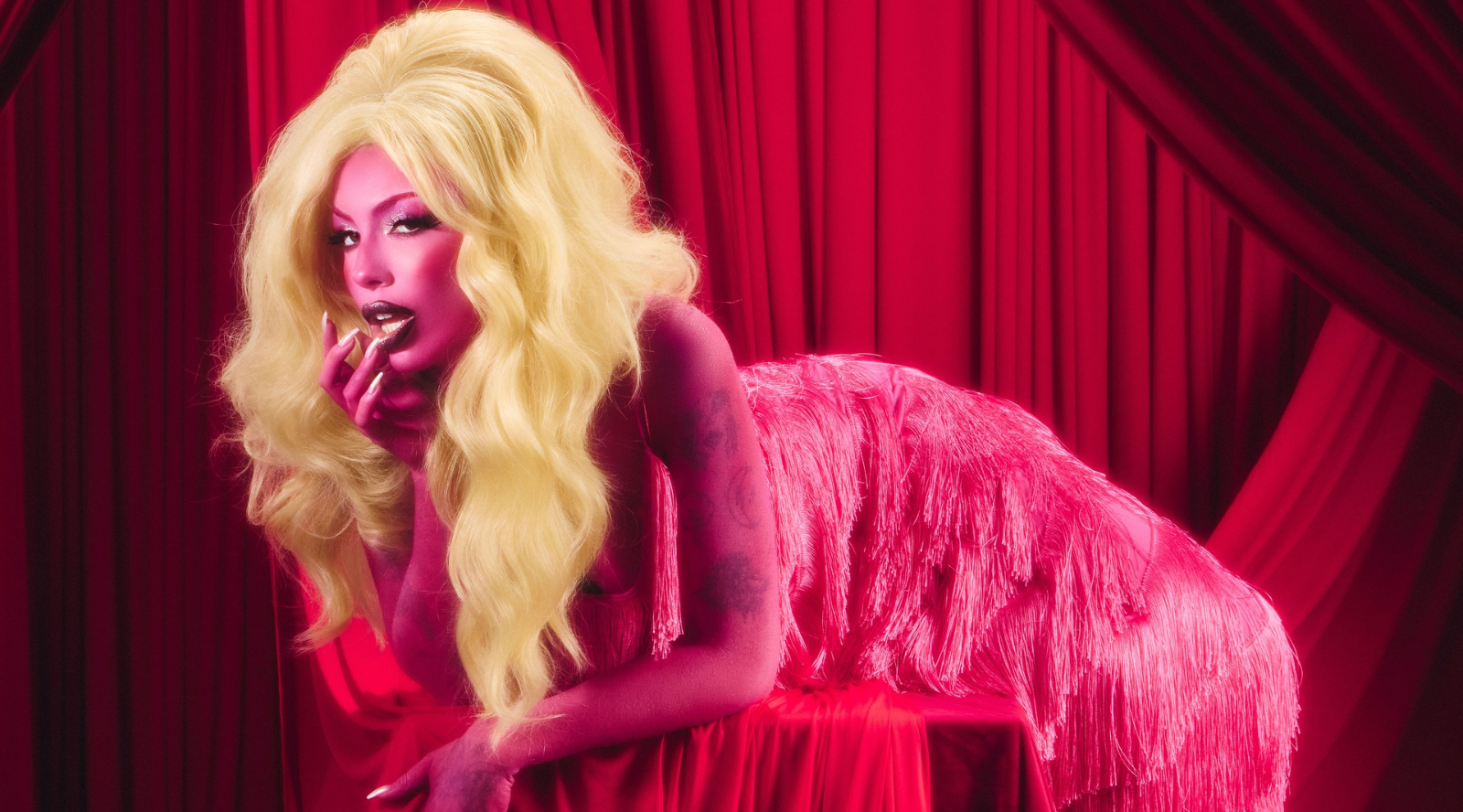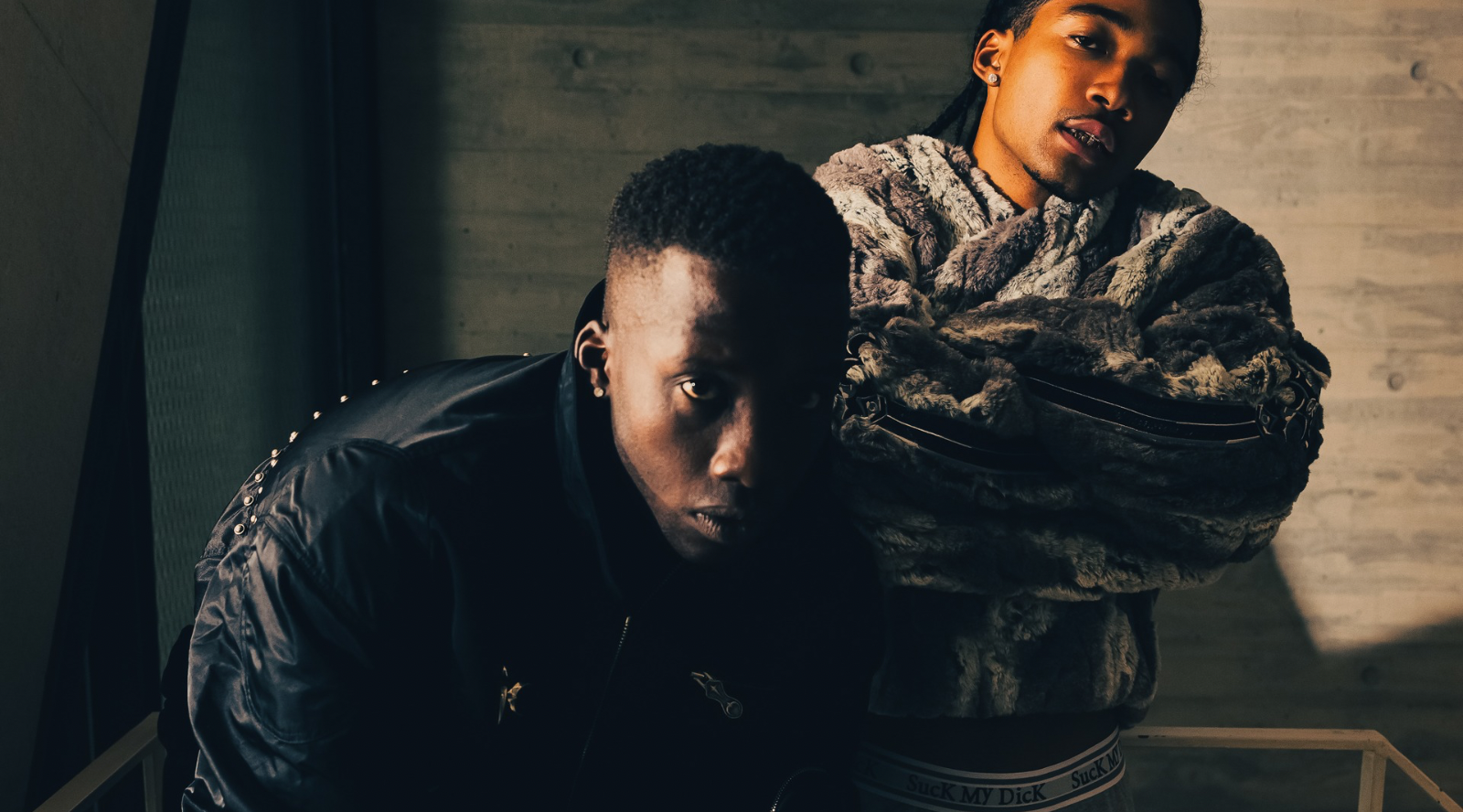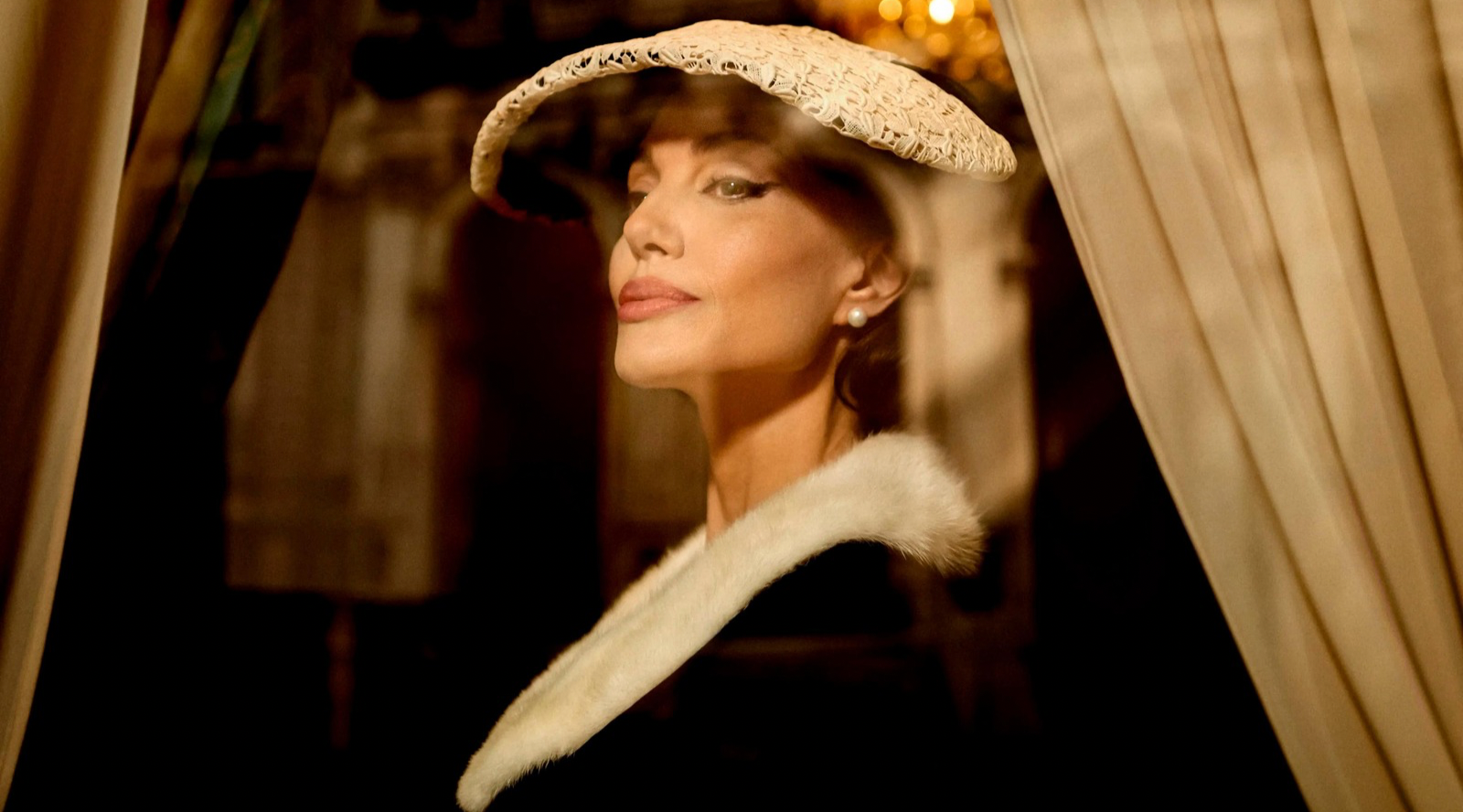A flattering, pared-down black blazer. A fitted dress shirt with extra-long cuffs. Clean fragrance with a whisper of confidence. Delineated under a trend coined “Corpcore,” this phenomenon reflects the idea of work and the work dress code evolving over time. From the waist-up subterfuge of Zoom meetings to the hybrid on-and-off-site schedules that followed, the real core of “Corpcore” lies in the life cycles of its ecosystem. With designers like Thom Browne, Peter Do, Miuccia Prada, and Sandy Liang leading the charge in 2023, a refreshing perspective was evident on the runway. Something about the air of professionalism became desirable to a young, trendy generation. Was this a sign of adult life inching closer from the once-far-off horizon, or a playful dress-up session imitating a future so unlikely it was safe to satirize?
The early 2000s were saturated with narratives of seamless transformation: co-ords that could go from boardrooms to bars, looks that transitioned effortlessly from “day to night.” Magazines and makeover shows romanticized the professional fantasy—dashing from the office to glittering social engagements, swapping loafers for heels and freshening up with a swipe of lipstick. Today, this fantasy persists, but in a more grounded form. Corpcore has expanded the professional aesthetic to accommodate the realities of hybrid living. Oversized coats, dark-wash jeans paired with tailored blazers, and chunky sneakers that bridge practicality with style have replaced the polished stilettos and compact mirror touch-ups of yesteryear.

From utility to personality, “corporate attire” as a plain canvas speaks to a collective longing for structure in an increasingly formless world. From 2020 onwards, the concept of office wear nearly vanished as workers retreated to their homes, trading loafers for slippers and trousers for pajama bottoms. Video calls became quintessential, and so blazers went over T-shirts, dress shirts were tucked into gym shorts—a fragmented, dual personality between the self we presented to others and the one we inhabited privately emerged. As the world reopened, Corpcore rose like a phoenix to signal a reclamation of the professional aesthetic and a typical, pre-pandemic living cadence. Runway designers leaned into the look, turning traditional office staples into canvases for creativity—Miu Miu’s Spring/Summer 2022 had everyone in a vice grip with pleated mini skirts. Martine Rose elaborated on ultra-tight dress shirts and exaggerated square-toe loafers. Loewe’s Fall 2023 menswear show featured plenty of meditative rebellions against convention to a sleek backdrop.
Both a source of agency and a mirror of societal expectations, we acknowledge the power the aesthetic wields while simultaneously challenging its definition. Crisp white button-downs are made sexy as a shirt dress; structured footwear underwent fusion with sneakers to create Frankenstein babies (like the New Balance 1906Ls). Pointed kitten heels and skinny-framed eyeglasses became absolutely essential. Pieces historically plain evolved into tiles of an aesthetic movement. While originally mundane as a piece of the cubicle uniform, these treatments aimed not to satirize but to reclaim.

For women especially, sex appeal is one of the most potent and complex tools in this cultural arsenal. It’s a double-edged power—both a weapon of self-expression and a reflection of societal constraints. Iconic characters like Gisele Bündchen’s statuesque cameo in The Devil Wears Prada, Bayonetta’s hyper-stylized “dominatrix” design, and Lucy Liu’s leather-clad, bespectacled disguise in Charlie’s Angels illustrate this tension beautifully. These figures wield themselves with precision, and for the consumers using their fictional portrayals as style inspiration, the look might serve as armor while reinforcing the external gaze that defines these styles as desirable in the first place.
In contrast, the masculine professional uniform (namely, the suit) has become an artifact of occasion rather than a daily staple. For many, donning a full suit-and-tie getup now carries a heavy weight of ceremony, akin to the significance of an evening gown for a woman. In a world dominated by casualwear, the suit transports the wearer into intentional participation in formality. Corpcore embraces and plays upon this transformation, reimagining menswear for a varied audience. Wide-legged trousers, relaxed blazers, and unexpected cuts breathe new life into the concept, stripping away its rigidity without sacrificing its symbolism. Take Thom Browne’s signature shorts, for example, and compare their wizened boyish charm with Patrick Bateman’s surgically terrifying yet classic designer wardrobe.

The blazer and dress shirt stand as timeless icons, weathering centuries of cultural and societal shifts with their classic forms largely intact. Fashion documentist Peter Noah sees young designers and thrifting enthusiasts alike continuing to redefine these staples, experimenting with unconventional combinations of tailoring, fabrics, and customizations that “push the idea of what a blazer and shirt combo might be, much faster than what we might have experienced in the last 100 or so years.” This energy suggests that the next epoch of office wear evolution could be far more dynamic than the last.
We find ourselves now in an era where access to information and a hunger for individuality accelerate change like never before. Corpcore captures the momentum of the age. Tradition and the reinvention thereof honor the enduring prose of professionalism while challenging its conventions. Balancing self-expression and societal expectations, the so-called trend has become a symbol of how today’s generation imagines concepts like “professionalism” and “success”—referential, reactionary, and radical.
